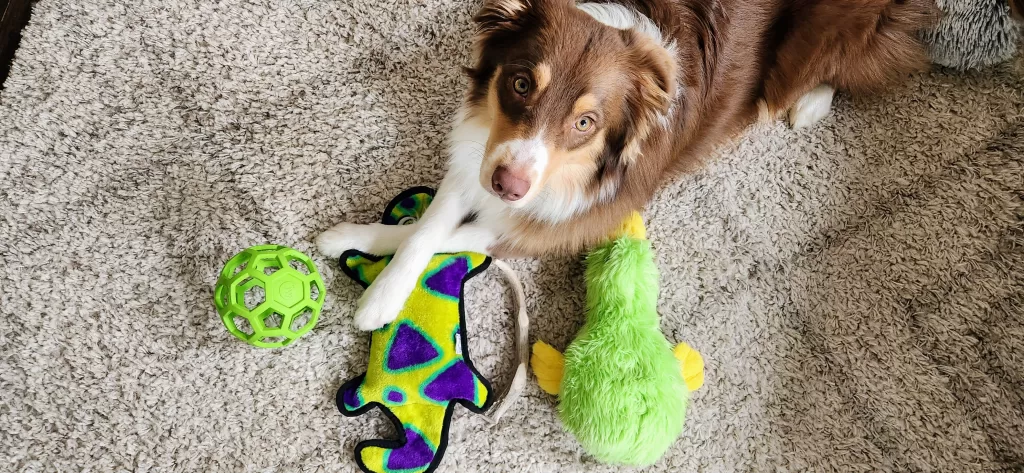
In this post, we’re going to walk through all the typical expenses that come along with dog ownership. From the initial cost of the dog to high-quality dog food to vet care, you’ll know the average cost of owning a dog per year.
Being a dog parent is arguably one of the best things ever. Yes, dogs can sometimes be a lot of work and they definitely aren’t cheap, but the costs that come with owning a dog are worth it and then some. We’ll save all the AMAZING things that owning a dog has to offer for a later post. For now, let’s focus on the bottom line.
How much does it cost to own a dog?
The short answer is between $725 and $3,210 per year for a healthy adult dog. The first year of owning a new puppy can cost anywhere from $950 to $5,685. And for a senior dog, you should budget somewhere between $775 and $3,510 a year.
Typical expenses of dog ownership include:
- Regular vet care & vaccinations
- Monthly preventatives (fleas, ticks, heartworms)
- High-quality dog food
- Toys
- Treats
- Basic supplies (dog bowls, collar, leash, ID tag, etc.)
- Grooming
- Daycare
If you bring home a brand-new puppy, you’ll likely want to consider costs such as:
- Puppy vaccinations
- High-quality puppy food
- A microchip
- A crate
- Neuter or spay, if you choose to do so
- Lots of chew toys
- Basic supplies (dog bowls, collar, leash, ID tag, etc.)
- The cost or adoption fee of the puppy
To care for an older dog, additional expenses may include:
- All of the normal expenses of an adult dog, plus…
- More frequent visits to the vet
- Medications
The average cost of owning a dog
Here is a breakdown of each of the typical costs of owning a dog. These are averages, so the actual cost could be different based on your circumstances, where you live, the accessibility of dog supplies, etc. We also can’t ignore the level you spoil your dog! If you make sure your dog never wants for anything, you could find yourself spending near or above the high ends of these expenses.
The annual cost of owning a healthy adult dog
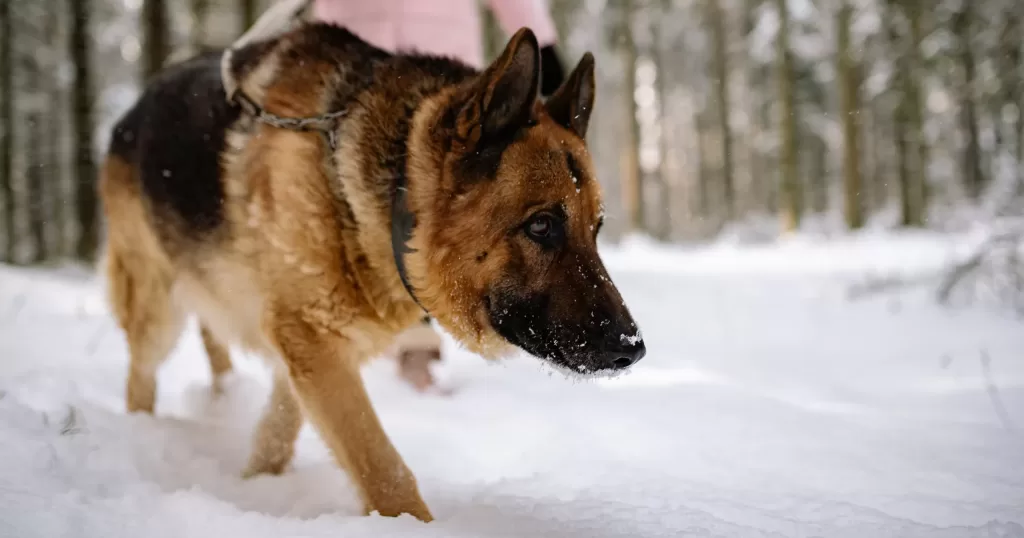
| Expense | Low End | Average | High End |
| Annual vet visits | $50 | $125 | $250+ |
| Core vaccinations | $30 | $45 | $60+ |
| Non-core vaccinations (optional) | $0 | varies | varies |
| Monthly preventatives* | $65 | $120 | $350+ |
| High-quality dog food* | $480 | $720 | $1,200+ |
| Dog toys | $20 | $50 | $100+ |
| Dog treats | $30 | $100 | $150+ |
| Basic supplies – one-time purchases | $50 | $200 | $600+ |
| Grooming (optional, breed dependent) | $0 | $50 | $500+ |
| Daycare (optional) | $0 | varies | varies |
| ANNUAL COST: | $725 | $1,410 | $3,210 |
*annual price reflects the average cost to feed a 50 lb adult dog high-quality dry kibble
Annual vet visits
Regular trips to the vet are an essential responsibility of good dog ownership. Preventative care helps keep your dog healthy and happy for longer. As a loving dog parent, you can’t ask for anything more!
Shop around by researching the rates of different offices. There is no hiding the fact that veterinarians that set up shop in nicer neighborhoods often have higher prices, but not necessarily better care. Call around to find the office you feel most comfortable with.
You know you have found a quality vet if they:
- Clearly love animals and show genuine consideration for your dog’s health
- Are happy to answer any questions you have about caring for your dog or concerns for your dog’s wellbeing
- Don’t immediately address concerns with prescription medications without understanding the problem first
- Treat you with patience and respect
If you’re not getting the bare minimum, spend your hard-earned money elsewhere!
Core vaccinations
Core vaccinations are determined by the American Animal Hospital Association (AAHA) and are considered the vaccinations that all dogs should receive. While, of course, you have a final say in the vaccines your dog is administered, these recommendations are set with the intention of reducing the spread of deadly diseases and keeping your dog healthy.
AAHA Core Vaccines include:
- Parvovirus
- Distemper
- Rabies
- Adenovirus
Rabies vaccine guidelines are managed at the state level, so check with your state to ensure you’re in line with the law. These laws are set in place because rabies is no joke. If you want nightmares for days, look up some videos of people or dogs with rabies. It’s super scary!
Non-core vaccinations
Non-core vaccinations are all the other potentially protective vaccines out there that the AAHA does not recommend all dogs receive. These include vaccines like:
- Bordetella bronchiseptica (kennel cough) vaccine
- Leptospira (Leptospirosis) vaccine
- Borrelia burgdorferi (Lyme) vaccine
- H3N2/H3N8 (canine influenza) vaccines
- Crotalux atrox (rattlesnake) vaccine
The vaccines that aren’t required may be for various reasons like their efficacy, potentially negative side effects and general risk factors of actually coming in contact with the virus.
The annual cost of non-core vaccinations completely depends on which and how many vaccines your dog gets.
Talk to your veterinarian if you have any questions about the immunity your dog is building from their vaccinations.
Monthly preventatives
Flea & tick preventative is extremely effective in preventing infestations on your dog. Fleas can create a problem throughout your entire home if not managed quickly and effectively. It will make your skin crawl to see a flea hop off your dog and onto your sofa. That said, prevention is the best defense against here – use a preventative. Talk to your vet about the different options out there.
Ticks carry diseases, like Lyme disease. No one wants that. Protect your dog by using a preventative.
Hundreds of thousands of dogs are diagnosed with heartworms annually across all 50 states. Heartworms kill dogs. They literally live and feed inside the dog’s heart and lungs. Save your poor dog from premature death by providing them with a super-effective monthly treatment.
As an Aussie mom myself, be careful when giving herding dogs treatments containing Ivermectin. Many herding breed dogs carry a Multidrug Resistance Mutation (MDR1) that prevents them from properly filtering Ivermectin in their bloodstream. Accumulation of the drug in their brains can cause severe neurological damage. If you have questions about the safety of these drugs for your dog, talk to your vet.
High-quality dry dog food
There are an overwhelming number of dog food options out there. Should you buy dry kibble? Canned food? What’s the deal with feeding dogs raw food? Is grain-free better? It’s a lot to take in.
If you’re a first-time dog owner, start with high-quality dry kibble and take it from there. If you have any questions about what’s okay or not okay to feed your dog, talk to your vet.
Before just grabbing the cheapest bag of dog food from the grocery store shelf, I urge you to do some research. Dog Food Advisor is a super helpful resource that reviews just about every dog food you can imagine against criteria that can help you make a good decision for your dog. Dog food may be the most considerable annual cost of owning a dog, but it’s also one of the most important in investing in good health.
Lastly, on the topic of grain-free: Check out this compelling research on diet-related cardiomyopathy. While I’m certainly not an expert in dog nutrition, I’m glad to recommend Merrick Classic Healthy Grains and Instinct Bites Raw Frozen Puppy Food dog foods, which I feed my dog.
Read More: 8 Holiday Foods You Can & Can’t Share With Your Dog
Dog toys
Many dogs enjoy playing with toys! As an owner, this doesn’t mean you need to go crazy and spend loads of money on dog toys. Amazon has some great prices on toys for any kind of dog. That said, don’t buy tons of toys right at first, but instead focus on giving your new dog some variety. See the kinds of toys they like best, then buy more of those.
If your dog destroys plush toys, save your wallet by investing in more durable options that won’t need to be replaced nearly as often. Gentle dogs that don’t chew much may prefer soft toys to cuddle with but never bother with a durable rope. By figuring out what your dog likes most, you’ll save money by avoiding ones that will sit at the bottom of the toy basket.
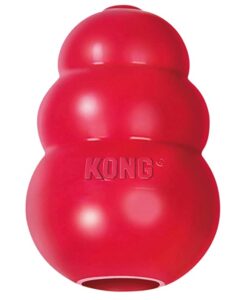
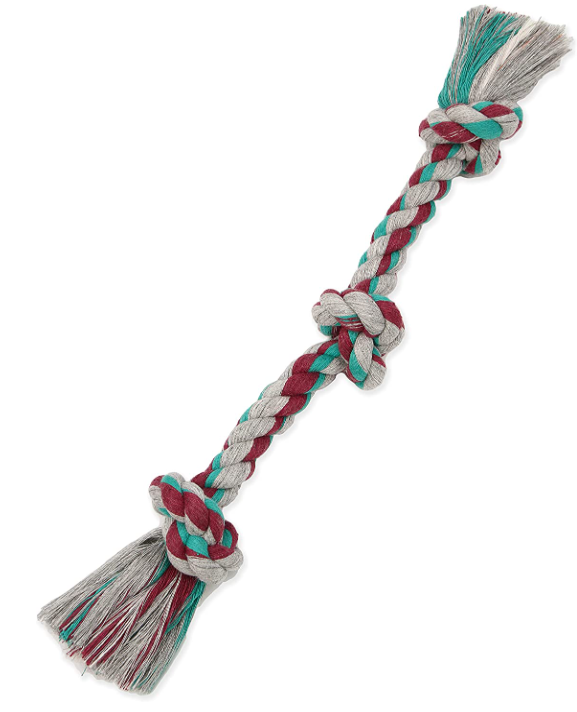
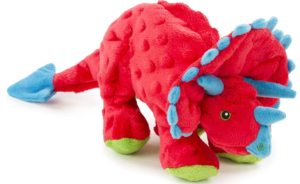
Dog treats
Dog treats are an extremely valuable training tool for teaching your dog just about anything. Having a pocketful of dog treats on hand makes it easy for you to reward your dog any time they do anything good, which can make a world of difference when you’ve got a new dog. In my opinion, a food-motivated dog is the easiest kind of dog to train!
The price tag on dog treats varies tremendously based on how many you go through, the quality of the treats and the kinds of treats you get. A good rule to keep in mind is to buy treats with fewer ingredients (i.e. more real food).
Pro Tip: Buy the smallest-sized bag of a high-quality dog food other than your dog’s normal food to use as treats. You get WAY more bang for your buck this way since you’ll end up with hundreds, if not thousands of “treats.” Plus, you get the added benefit of rewarding your dog with a nutritionally balanced snack.
Basic supplies – one-time purchases
There are a few essentials your dog will need that won’t need to be replaced or replenished frequently:
- Collar with a plastic or metal clasp that you pinch to release – avoid belt-style since they pose a higher risk for strangulation
- 6ft leash – for an everyday leash, avoid going longer than 6ft since many leash-related ordinances require a 6-foot leash or shorter
- ID tag – the best thing you can get for your dog in case they get loose!
- Food & water bowls – opt for stainless steel or ceramic for durability and better hygiene (plus they last forever)
If your dog isn’t housetrained or trustworthy enough to be left home alone, you may need a crate or baby gates too. For a housetrained adult dog, the use of a crate is completely up to you.
Once you have these essentials, you’ll rarely have to replace them, if ever. No judgment if you replace your dog’s collar and leash just to update their wardrobe though. I’m definitely guilty of this!
Grooming
Some dogs, like Poodles and Yorkies, need regular grooming to maintain their appearance and health. You can expect the highest maintenance dogs to end up at the groomer’s about once a month.
Other breeds, like Australian Shepherds and Huskies, can benefit from a visit to the groomer’s, but it isn’t necessary. Heavy shedding breeds need lots of brushing and occasional baths to stay looking sharp. If you’re up for it, you can handle this at home, but a groomer will also do the trick!
And there are breeds that never demand a professional groomer. Short-haired, low-shedding dogs can usually be easily groomed at home with occasional baths.
Long story short, the amount you’ll spend on grooming will depend on the breed of dog you have and your ability and willingness to handle some grooming at home.
Daycare
Doggy daycare is a completely optional service that some dog owners may never use. If you have a plan in place for your dog to be cared for every day, even while you’re at work, then scratch this one off the list. But don’t forget about using daycare as a training and socialization tool!
Daycare is pretty awesome for a few reasons:
- Even the highest-energy dogs will come home completely tuckered out. This can be a huge relief after a super busy day or when you’re sick.
- Group play situations are great for socializing young dogs. It gives them the opportunity to learn how to interact with other dogs in a controlled environment. This has been a life-changing advantage of daycare for my puppy. After I had a dog-reactive pup for over a decade, having a dog that is sweet to everyone is honestly so fun.
- You can leave the house all day without rushing home or worrying about how long you’ve been gone. If you find yourself a great doggy daycare facility, you can relax knowing your dog is having a fun day in good hands.
You may not need or want to use a daycare service on a regular basis, but I would recommend keeping it as an option even just to give your dog some exercise and playtime with other dogs every once in a while.
The first-year cost of bringing home a new puppy
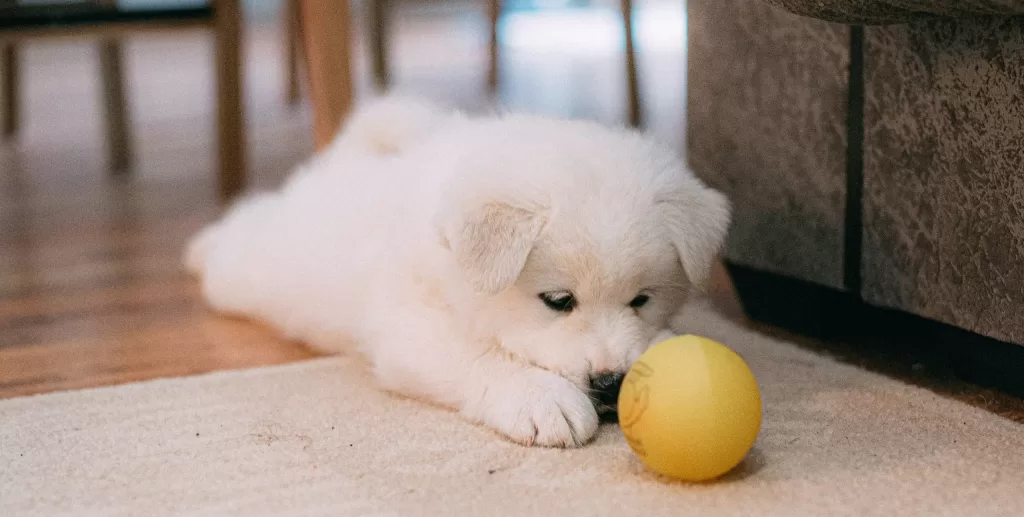
| Expense | Low End | Average | High End |
| Vet visits | $150 | $375 | $750+ |
| Core puppy vaccinations | $115 | $140 | $175+ |
| High-quality puppy food* | $480 | $720 | $1,200+ |
| Microchip | $25 | $40 | $60+ |
| A crate | $60 | $100 | $300+ |
| Neuter/spay procedure (optional) | $50 | $250 | $450+ |
| Chew toys | $20 | $80 | $150+ |
| Basic supplies – one-time purchases | $50 | $200 | $600+ |
| The sale price or adoption fee | $0 | $400 | $2,000+ |
| FIRST-YEAR COST: | $950 | $2,265 | $5,685 |
* annual price ranges for a medium to large breed puppy
Vet visits & core puppy vaccinations
Unlike vaccinating a healthy adult dog, puppies require lots of vaccines to build up their immunity against potentially fatal viruses. While budgeting for a new dog, you should be aware that puppies cost more than adult dogs. Even if you’re puppy is up-to-date on vaccinations and deworming when you bring them home, you can expect to take a 3-month-old puppy to the vet about every 3-4 weeks for their first 6 months. It adds up fast!
The cost is well worth it though – you’ll set your new pup up with the best chances for a long, happy life. Once your puppy is vaccinated and boosted with all his core vaccines, you’ll be all set for the next 1-3 years, depending on the vaccine, and can default to annual office visits moving forward.
A crate
There is so much controversy around crate-training puppies, but I really don’t understand why. Crate training a puppy makes life SO MUCH easier for you and your dog. Since puppies have a special knack for getting into things they shouldn’t, crates give them a safe space to relax while you’re not watching them. Crates are a super helpful housetraining tool since puppies are less likely to go potty where they sleep.
Most importantly, crates give your puppy somewhere safe to hang out while you leave the house. Or even just while you indulge in an hour or two of alone time. Because my goodness, in those first few weeks of raising a new puppy, you really need to take a break sometimes!
Crates come in a variety of styles with different price points. In my experience, a basic wire crate like this one does the trick just fine. Line it with a blanket or dog bed and you’re good to go!
Neuter/spay procedure
If you choose to neuter or spay your dog, this is something that will likely happen within the first year you have them. There’s lots of debate over the “best” time to have the procedure done. If you adopt, the shelter or rescue may require your dog to be fixed before you bring them home. Others require you to sign a contract and pay a refundable deposit that’s returned to you after they’re fixed.
There are several benefits that come along with sterilizing your dog, but it’s not for everyone. Do some research and talk to your vet if you’d like to understand more.
The cost of this procedure is generally more for females since it’s more invasive. The cost also varies depending on where you have it done. Clinics and humane societies are usually less expensive than private practices.
Chew toys
Puppies chew A LOT and they’re happy to chew on just about anything. Yeah, your shoes and furniture are just fine with them! Give them a healthy chewing outlet by providing lots of safe chew toys.
My puppy, Zion, was a crazy chewer and biter. Eventually, we figured out a good routine that involved a couple of long chewing sessions each day on a natural chew, like a bully stick. Giving him those opportunities to gnaw on something of his own made a world of difference when it came to him chewing on my things. These chews seemed to satisfy his urge to chew enough to keep him from ruining everything I own. Please never leave your dog unattended while they’re enjoying a chew toy!
For light to moderate chewers
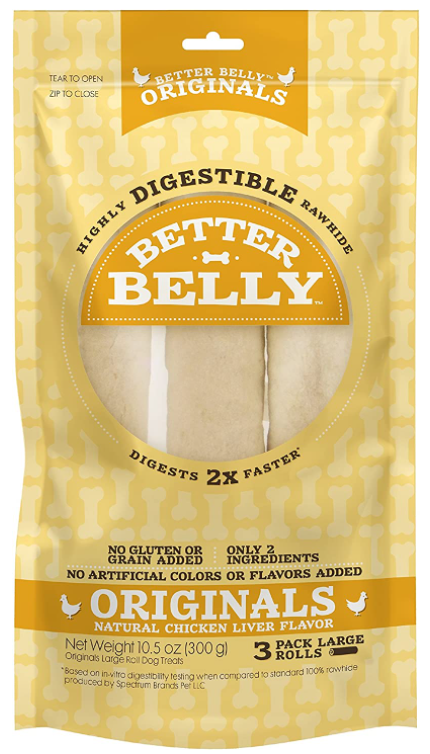
For puppies

For moderate to heavier chewers
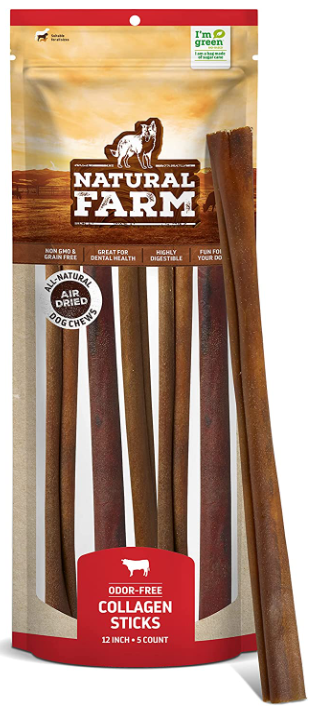
Basic supplies – one-time purchases
There are a few essentials you’ll need to pick up for your new puppy that won’t need to be replaced or replenished frequently (or maybe ever!):
- Collar with a plastic or metal clasp that you pinch to release – avoid buckle-style since they pose a higher risk for strangulation
- 6ft leash – for an everyday leash, avoid going longer than 6ft since many leash-related ordinances require a 6-foot leash or shorter
- ID tag – the best thing you can get for your dog in case they get loose!
- Food & water bowls – opt for stainless steel or ceramic for durability and good hygiene
Check out this post that entirely focuses on the things you should buy before you bring a new puppy home.
Read More: 13 Essentials for Your New Puppy Survival Kit
The sale price or adoption fee
The price tag on your dog itself (which is a kind of gross concept to me, but I digress) can be a significant upfront cost to dog ownership. These days, adoption fees from rescues and shelters seem to vary anywhere from $100-400. If you live in an area with loads of shelter dogs, the adoption fees may be even lower, in the double digits.
Buying from a responsible breeder is another option for acquiring your new best friend. This route, though, can be much more expensive. A good, reputable breeder may charge anywhere from $400 to $2,000 or more for a dog. This price depends on a wide range of factors like whether or not the pup is registered with the AKC, their breed, their coloration, their health & more.
If you’re researching the cost of owning a dog because you’re looking to get one, please, PLEASE do NOT buy a dog online or from a pet store. Online breeders and pet stores are very often souring puppies from puppy mills.
Puppy mills are mass commercial breeding facilities that drive solely on the goal of making money, often at the expense of the dogs. While licensed puppy mills are FDA regulated, trust me when I say their standards are not respectable. You want better for your new best friend!
Adopting from a rescue or buying from a responsible breeder are your best options for getting your perfect dog.
Read More: 35 Unique Dog Names & Their Meanings
The annual cost of caring for a senior dog
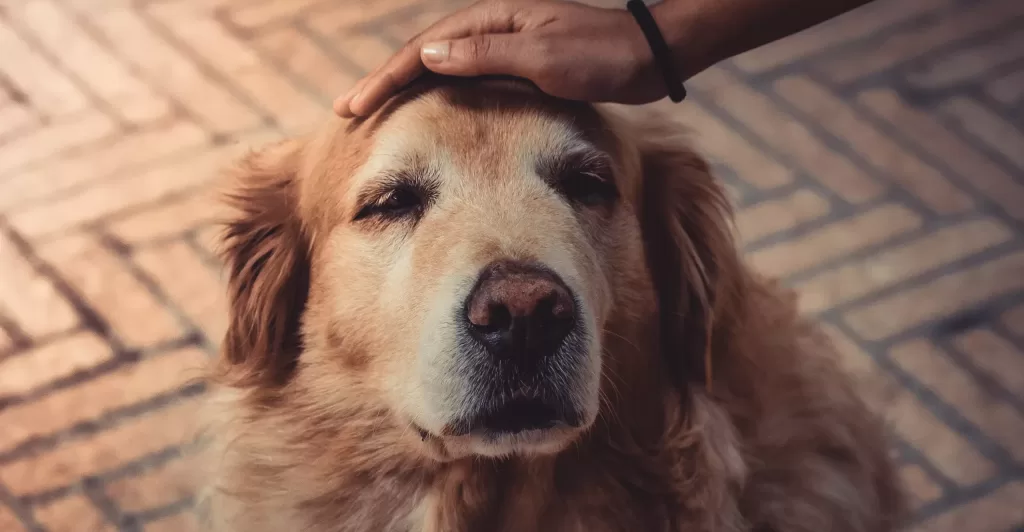
| Expense | Low End | Average | High End |
| All typical adult dog expenses | $725 | $1,410 | $3,210+ |
| More frequent vet visits | $50 | $150 | $300+ |
| Medication | $0 | varies | varies |
| ANNUAL COST: | $775 | $1,560 | $3,510+ |
More frequent vet visits
Like older people, older dogs are more likely to be visited by new aches and pains. They’re also more likely to develop illnesses than in their earlier years. As a result, you may find yourself taking your dog to the vet more often than when they were younger.
The cost associated with these more frequent vet visits varies drastically based on the ailments your dog is struck by, along with the treatments that go along with them. Here are some examples of costs that could be incurred during these extra visits:
- Office visit: $50-100
- Full chemistry blood panel: $150-200
- X-ray: $100-500
- Dental cleaning: $50-300
- Overnight emergency vet stay: $800-1,500
As you can see, the cost of dog ownership may naturally rise if your dog develops illnesses or conditions that require additional care. The cost of that care completely depends on the dog. Some dogs gracefully age, requiring very little extra attention than they did in their prime.
Medication
Similarly to needing more veterinary care, senior dogs may also require medication to maintain their quality of life. The cost of the medication will entirely depend on the type and amount of medication your senior dog needs. Here are some examples of common medications a dog may benefit from with the cost per refill:
- Anti-inflammatory: $20+
- Pain Relief: $40+
- Insulin: $40+
- Antibiotics: $15+
As dogs get older, the likelihood that they could benefit from some medications increases, but again, the annual cost to your will depend on the health of your dog.
The financial & emotional cost of the passing of your dog
Financial cost
While no one wants to think about this, the final expense of dog ownership is often the passing of your dog. Hopefully, as a new or prospective dog owner, you won’t have to think about this for a very long time.
In many cases, your dog will pass under your watch, which could happen one of two ways:
- You take your dog to the vet to be put to sleep
- Your dog passes at home (or somewhere other than the vet’s office)
| Expense | Low End | Average | High End |
| Euthanasia | $75 | $125 | $200 |
| Cremation & Memorial Services | $0 | $200 | $400 |
| TOTAL: | $75 | $325 | $600 |
Euthanasia
The cost to euthanize a dog ranges from about $75-200, depending on where you go and the size of your dog. A clinic will be more affordable than an emergency vet, but in the event, understand you may not have a choice.
Euthanasia pricing generally includes the office visit and the injection. If you wish to have your pet cremated, that would be paid for separately.
Cremation
Cremating your pet is an option for those that want to keep or spread the cremains of their beloved pet. The prices for this service range widely depending on the exact service you’d like.
Faithful Companion is a pet cremation service that has locations in several states throughout the US. I used this company when my beautiful boy, Kobe, passed. I would highly recommend it to anyone whose pet passes at home since they will pick them up for you. The staff is insanely kind and makes the process as easy as they can, despite the painful and difficult circumstances that call for their help.
Their pricing isn’t on the website, but I paid $275 for my dog to be cremated alone (so the cremains were only his) and to have him brought back home to me the next day.
Shared cremations, longer wait times and other memorial options can bring this price up or down pretty significantly. You should expect to pay between $100-400.
Burying your pet is also an option but before you do, check on your city’s local ordinances to ensure you’re not creating a health hazard.
Emotional cost
As a devoted dog mom myself, I can’t talk about the financial cost of losing a dog without mentioning the emotional cost too. If you’ve never owned a dog and want to prepare for the long (and beautiful and rewarding) road ahead, know that one day, there will be a “last day.”
Please don’t let this dissuade you from choosing to bring home a new best friend, but also know, when they cross the rainbow bridge, it’s going to hurt like hell. We’re talking world-stopping, breathtaking, soul-smashing pain here.
So like… I recommend getting a dog 100%, but you’ve been warned.
Read More: I Miss My Dog | Grieving My Best Friend
Conclusion
That wraps up all the common expenses you can expect to contribute to the cost of owning a dog! As you can see, the cost of owning a dog isn’t one to take lightly – it can get expensive and dogs are a long-term commitment.
If you feel confident in taking on the financial responsibility of being a dog parent, congratulations! Now just make sure you have the time, patience and other resources to set both you and your pup up for success.
Do you have any questions about other dog expenses? Are there expenses that you’ve incurred that you wish more people know about? Please leave a comment!
Happy dog parenting,


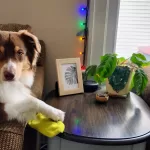



Leave a Reply